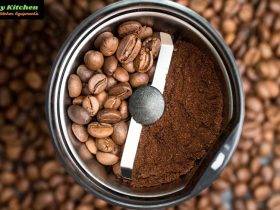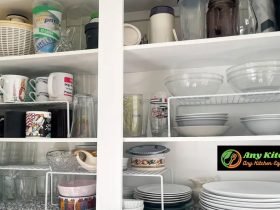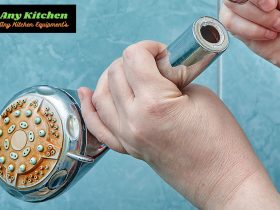“Can you put milk in an electric kettle?” is a question that gets people interested in the kitchen. The electric kettle has been a cooking staple for a long time. Its main purpose is to heat water, so it boils water quickly and efficiently. But the fact that it can be used to heat milk brings up some interesting questions. Even though it might seem like an easy way to make hot milk for drinks like hot cocoa or chai tea, the answer is not as simple as it might seem. In this experiment, we’ll look into how useful it is and what could go wrong if you heat milk in an electric kettle. We’ll talk about both the pros and cons of this unusual kitchen project. So, if you’ve ever wondered if your electric kettle could be used for more than just boiling water, come with us on this journey to learn more about this dairy problem.
How Does An Electric Kettle Work?
An electric kettle is a marvel of modern technology that makes heating water much easier. It works by using electricity to heat things, which is a simple idea. A heated element, usually made of metal like stainless steel or copper, is inside an electric kettle. When you plug the kettle in and turn it on, electricity runs through this heating element. Because it has a high electrical resistance, it starts to heat up quickly.
As the heating element gets hotter, it transfers this heat to the water in the kettle through direct contact or convection, based on how the kettle is made. The heating process keeps going until a thermostat or temperature sensor tells the kettle that the water has hit the desired boiling point. When this happens, the kettle turns off automatically to prevent damage from overheating or boiling dry.
Some current electric kettles have extra features like an automatic shut-off, different temperature settings, and even a “keep-warm” function, which makes them more useful and versatile in the kitchen.
Is it okay to put milk in an electric kettle?
Most of the time, you shouldn’t put milk in an electric pot. Electric kettles are made to heat water, not milk or other drinks that have different qualities. Milk tends to burn and leave behind a sticky film on the heating element and inside the pot. This dust can be hard to clean and may affect how well the kettle works and how long it lasts. Also, heating milk in a kettle can give it an unpleasant smell and could cause the milk to burn or curdle.
If you need to heat milk, it’s safer and better to use a saucepan or a jar that can go in the microwave. If you use an electric kettle for something other than water, be careful because it could void the guarantee and be dangerous. Keeping your electric kettle only for boiling water will make it last longer and work better.
How To Boil Milk In An Electric Kettle
The first thing you have to do is pour milk into the kettle. Make sure the milk doesn’t get close to the top of the pot because that could cause it to boil.
Then, please turn on the pot and wait for it to boil. Once the milk is boiling, please turn off the kettle and let it cool a bit before putting it into a jug or mug.
If you want to froth the milk, you can use a hand-held frother or a mixer that you put in the milk. Hold the blender or frother just under the milk’s surface and turn it on.
Move it around in a circle until you have made the amount of foam you want. Pour the milk into your mug, and you’re done!
Advantages of Using an Electric Kettle to Boil Milk
Bringing milk to a boil in an electric pot can be helpful in a few situations:
- Speed and efficiency: Electric kettles are known for how quickly they bring water to a boil, and they do the same thing with milk. It’s a faster way to heat than using the stove, so it’s good for busy mornings or when you want a hot drink quickly.
- Precision: Many current electric kettles have precise temperature controls that let you heat milk to the exact temperature you want. This is especially helpful for frothing milk or making coffee and tea drinks that aren’t your average cup of joe.
- Safety: Electric kettles often have safety features that turn them off when the water boils. This makes it less likely that milk will boil over or get burned.
- Portability: Electric kettles are small and easy to move, so they can be used in dorm rooms, businesses, or small kitchens with limited space on the stovetop.
But it’s important to clean the kettle well after heating milk so that dust doesn’t build up and cause smells. Electric kettles should not be used to boil large amounts of milk or for long periods of time. Instead, you should use traditional means like a stovetop or a microwave.
How Do You Boil Milk In An Electric Kettle Without Burning It?
Before you start, you must first make sure that the electric pot is clean and dry. The water on the inside of the pot will boil off before the milk has a chance to heat up, which can cause the milk to burn.
Second, before you turn on the pot, you need to put the milk in it. So, the milk will start to heat up right away, and it won’t have time to burn on the bottom of the pot.
Lastly, once the milk has started to boil, you should be careful not to let it boil for too long.
Milk that has been boiled can quickly get burned and salty, so it’s important to take it off the heat as soon as it starts to boil.
How do you Clean an Electric Kettle After Boiling Milk?

Once the milk is done boiling, the pot needs to be cleaned. If you leave milk on the inside of the kettle, it will go bad and germs will grow.
To clean the electric pot, you can use either of the following:
1. Vinegar solution
The first thing you need to do is empty the pot and wash it with water. Then, fill the kettle with a combination of vinegar and water that is equal parts of each. Let the vinegar work for 30 minutes while the kettle sits.
After 30 minutes, the pot can be emptied and washed with water. Do this at least a few times to get rid of all the milk leftovers in the kettle.
Once the kettle is clean, you can use a clean towel to dry it.
2. Using Kettle Cleaner
It’s easy to use a pot cleaner. Just put some water in your pot and bring it to a boil. Once it starts to boil, add the kettle cleaner and let it cook for a few minutes.
Get rid of the water and clean any cracks or crevices. Rinse it with water and let it dry, or use a towel to clean it.
Conclusion
Even though it is possible to put milk in an electric kettle, it is usually not a good idea because the milk could burn, the residue could build up, and the device could be damaged. Electric kettles are designed to quickly and safely heat water. For heating milk or other liquids, it’s best to use stovetop or microwave methods that work better. This will help your electric kettle last longer and work better and keep it from getting smelly and hard to clean.
Read More: How to clean electric kettle without vinegar
Frequently Asked Questions
Can we use an electric kettle for milk?
Yes, you can also use your kettle to heat milk.
What happens if we boil milk in an electric kettle?
Electric kettles put all the power they can into the water, so if you put things in there that can burn, they probably will. If you boil milk, you’ll end up with a lot of burned milk on the bottom, which won’t be easy to clean or taste good. Most likely, the milk will also spill, which will make a mess.
Can we boil milk in a Philips electric kettle?
Even though you can boil milk in a pot, there are some things you should know first. It is best to boil milk in a kettle that isn’t electric because milk can stick to the heating element in an electric kettle and make it hard to clean.
Can we make Maggi in an electric kettle?
Maggi is easy to make and doesn’t take a lot of time. You don’t need a gas stove to make this common comfort food. All you need is a pot. Just fill a pot with 1 cup of water and turn it on. When the water boils, add the broken noodles and Maggi tastemaker.










Leave a Reply